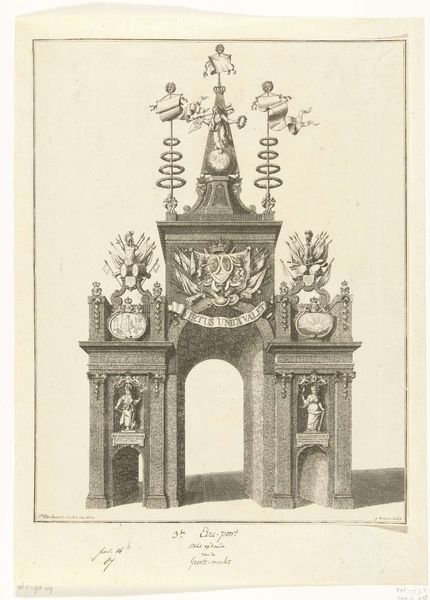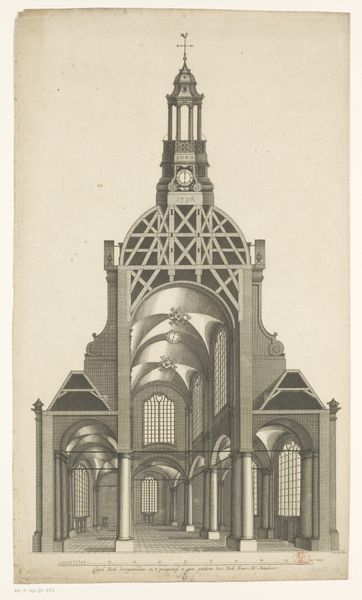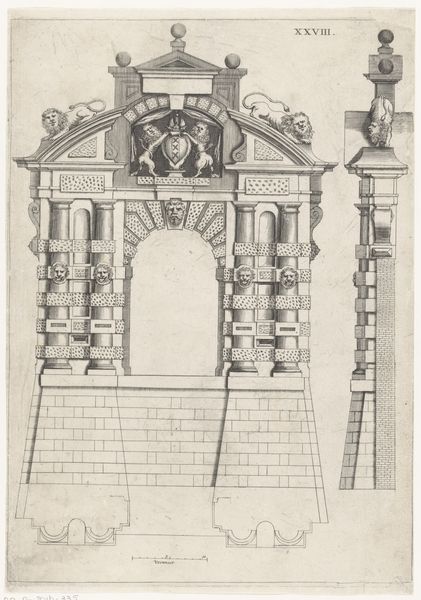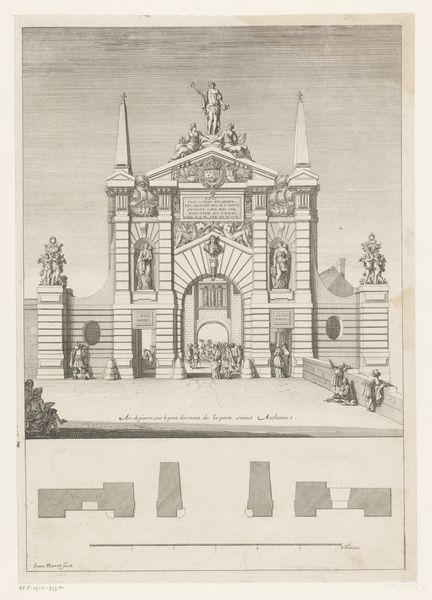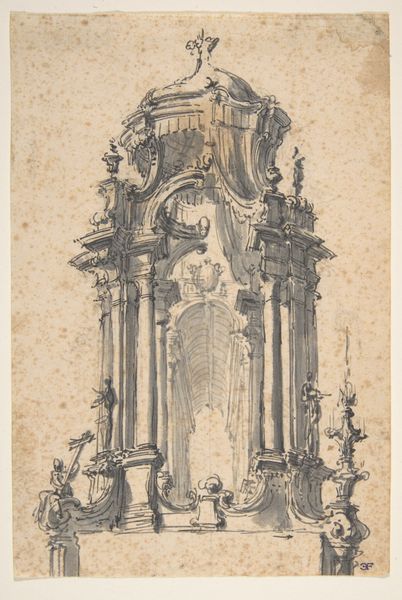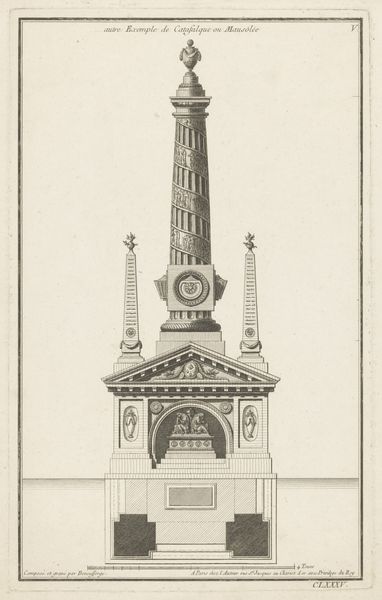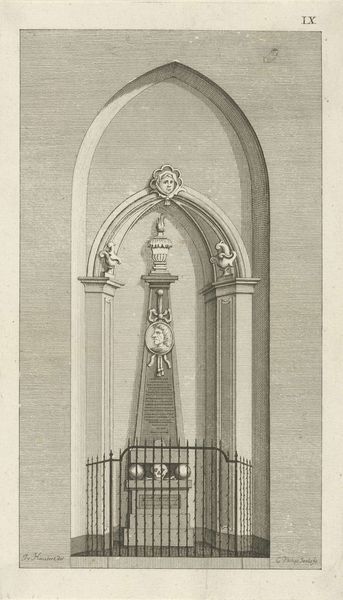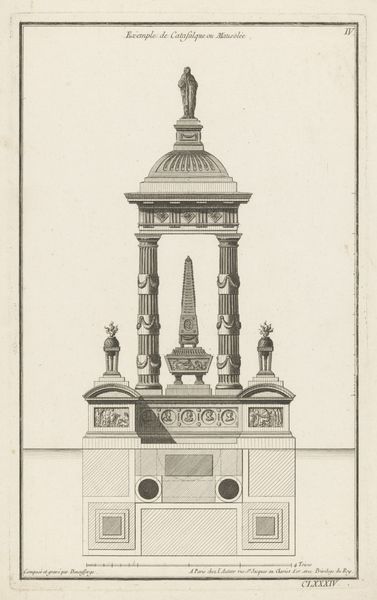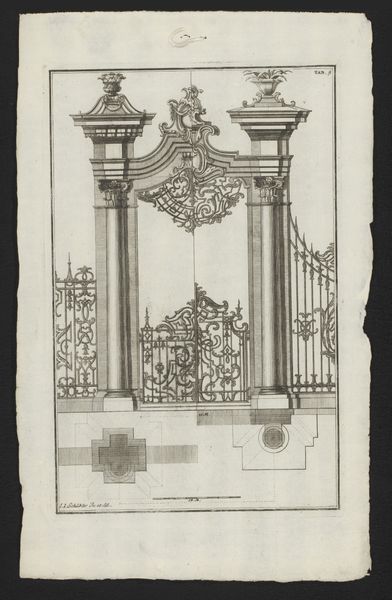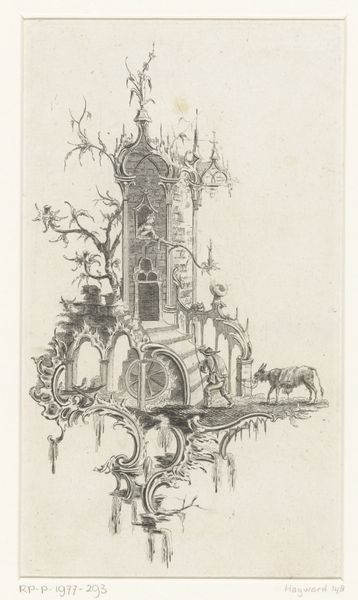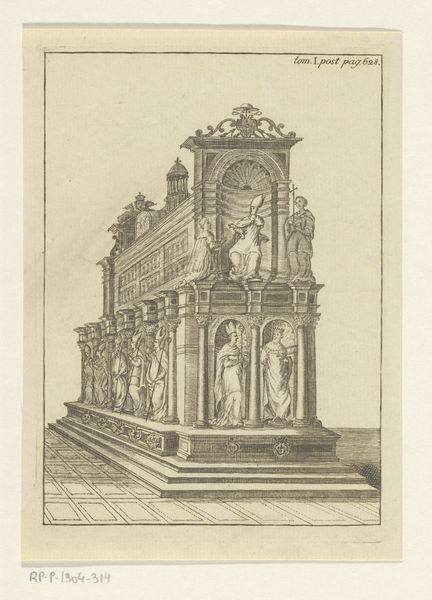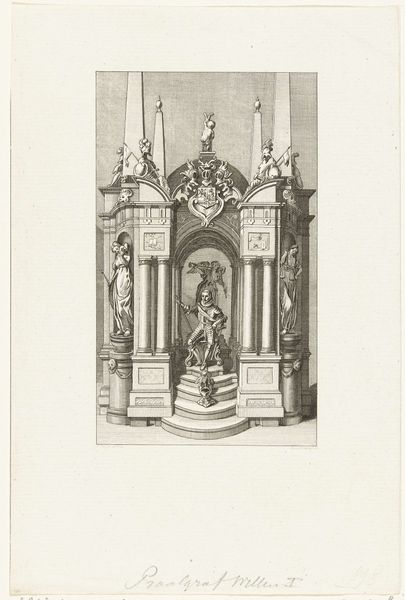
Erepoort aan de Veemarkt bij de intrede van Willem IV en zijn gemalin te Breda op 13 september 1737 1737
0:00
0:00
print, engraving, architecture
#
baroque
# print
#
old engraving style
#
landscape
#
form
#
line
#
cityscape
#
history-painting
#
engraving
#
architecture
Dimensions: height 353 mm, width 277 mm
Copyright: Rijks Museum: Open Domain
This etching of an ornamental gateway, made by Iven Besoet around 1737, commemorates the entry of Willem IV and his wife into Breda. While the scene itself is celebratory, the printmaking process offers insight into the social context of its creation. Etching is an indirect intaglio process, in which a metal plate, usually copper, is coated with a waxy, acid-resistant substance known as a ‘ground.’ The design is then scratched into the ground, exposing the metal. When the plate is immersed in acid, the exposed areas are eaten away, creating incised lines. The depth of these lines dictates the darkness of the printed image, as they hold the ink. The act of etching is laborious. The ground needs to be prepared, the design carefully inscribed, and the acid meticulously controlled to achieve the desired effect. This contrasts with the grandeur of the depicted gateway, reminding us that even celebrations of power are often brought to us through the labor of skilled artisans. The fine lines capture the ornate details of the temporary structure, a potent reminder of the intersection of art, labor, and political theater.
Comments
No comments
Be the first to comment and join the conversation on the ultimate creative platform.
